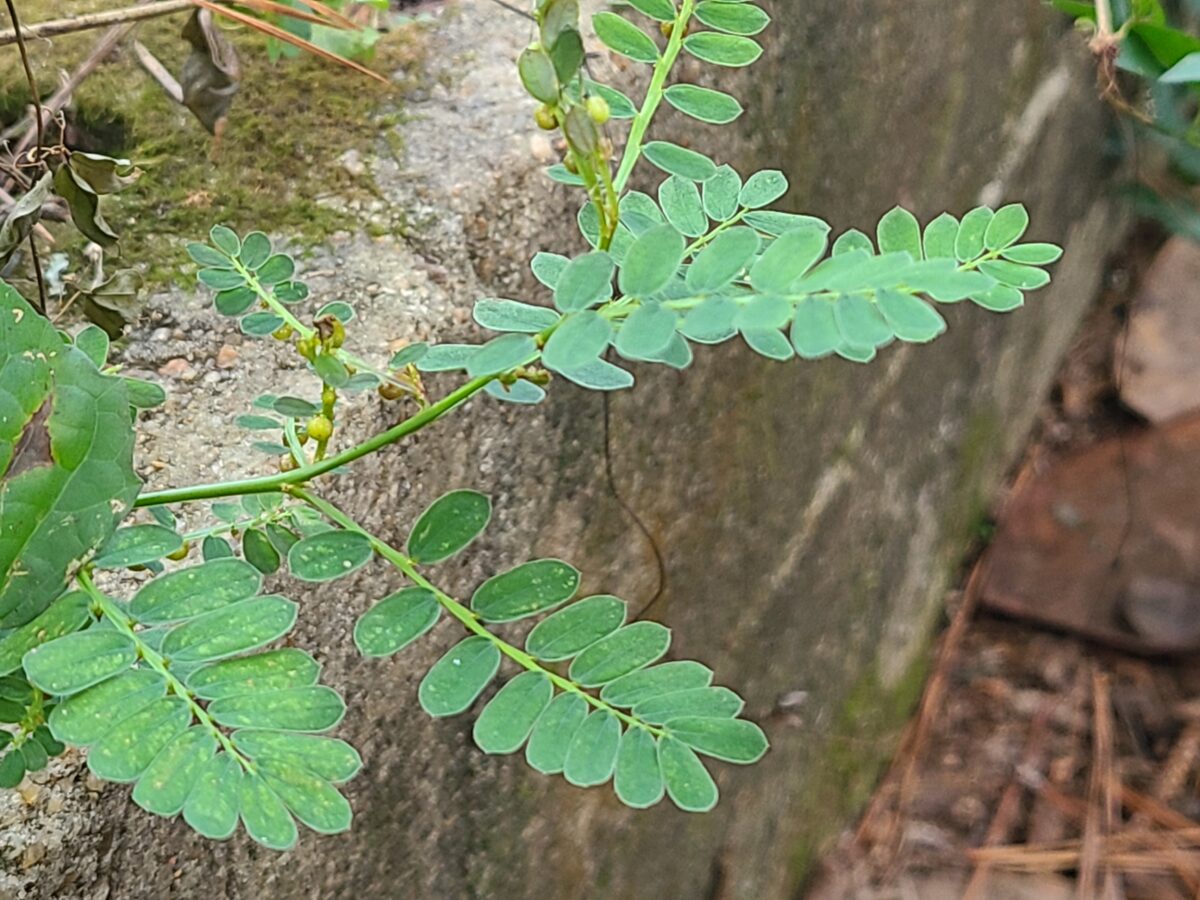Scientific names: Phyllanthus niruri, Phyllanthus urinaria, Phyllanthus amarus, Phyllanthus debilis
Other common names: Gripeweed, leafflower, little mimosa, shatterstone, stonebreaker1 gale of wind
Chinese: Ye Xia Zhu
Thailand: Look Tai Bai
Vietnam: Diep Ha Chau2
Brazil (Portuguese): Quebra Pedra
Costa Rica (Spanish): Chanca Piedra, Yerba de San Pablo, Rompepiedras
French: Graine en bas feuilles
Chamberbitter is a warm-season, annual, broadleaf weed that grows in warm soils beginning in early summer.3 The name can refer to a few different closely related plants, all of which have similar appearance and medicinal uses.
In North Florida, the plant can be found much of the year and becomes prolific in the late Summer. It can be easily found in lawns and fields during warmer parts of the year. It has been called Chanca Piedra because it has been used for generations by the indigenous peoples of the Amazon as an effective remedy to eliminate gall and kidney stones and for other related problems.
Identification
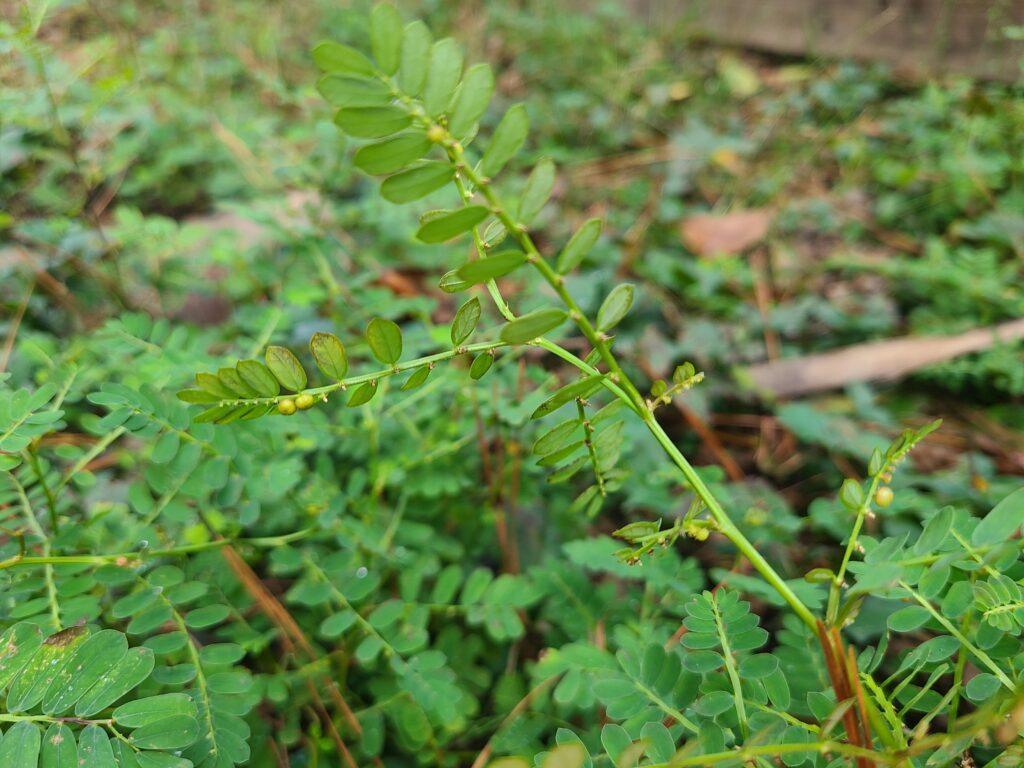
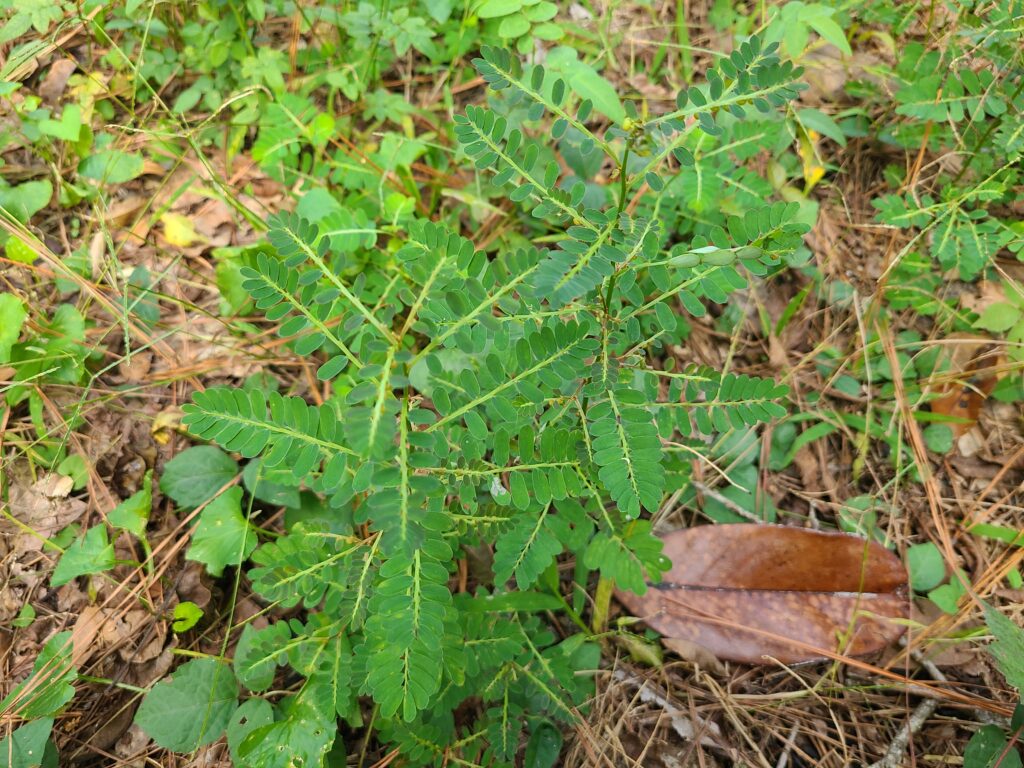
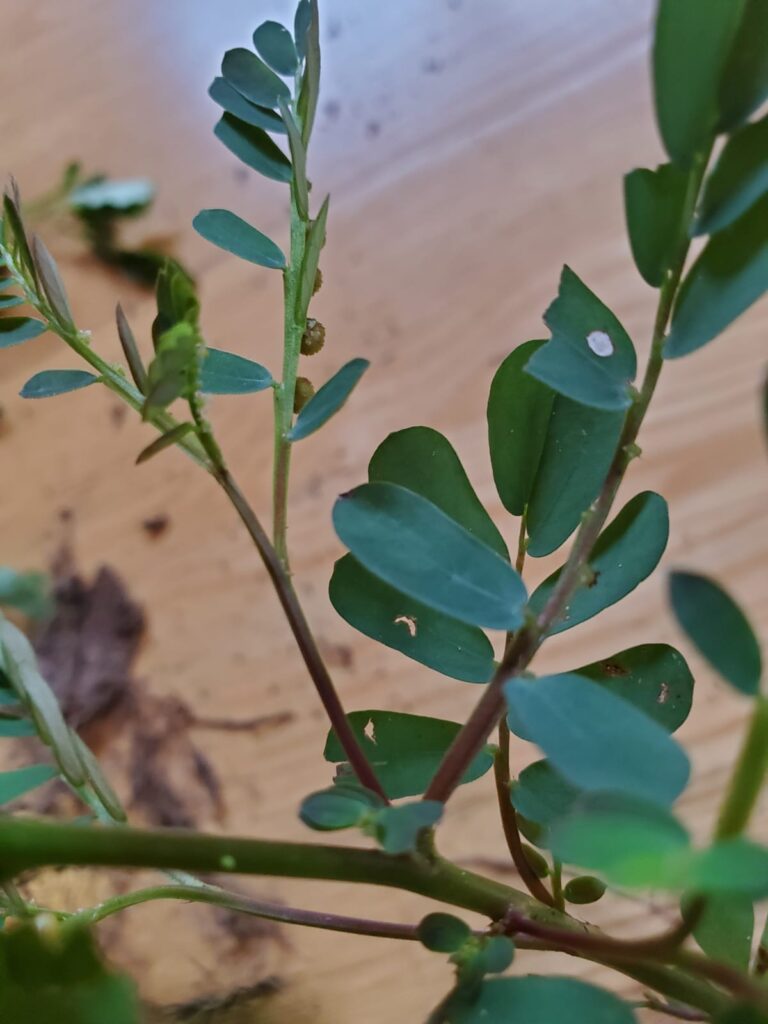

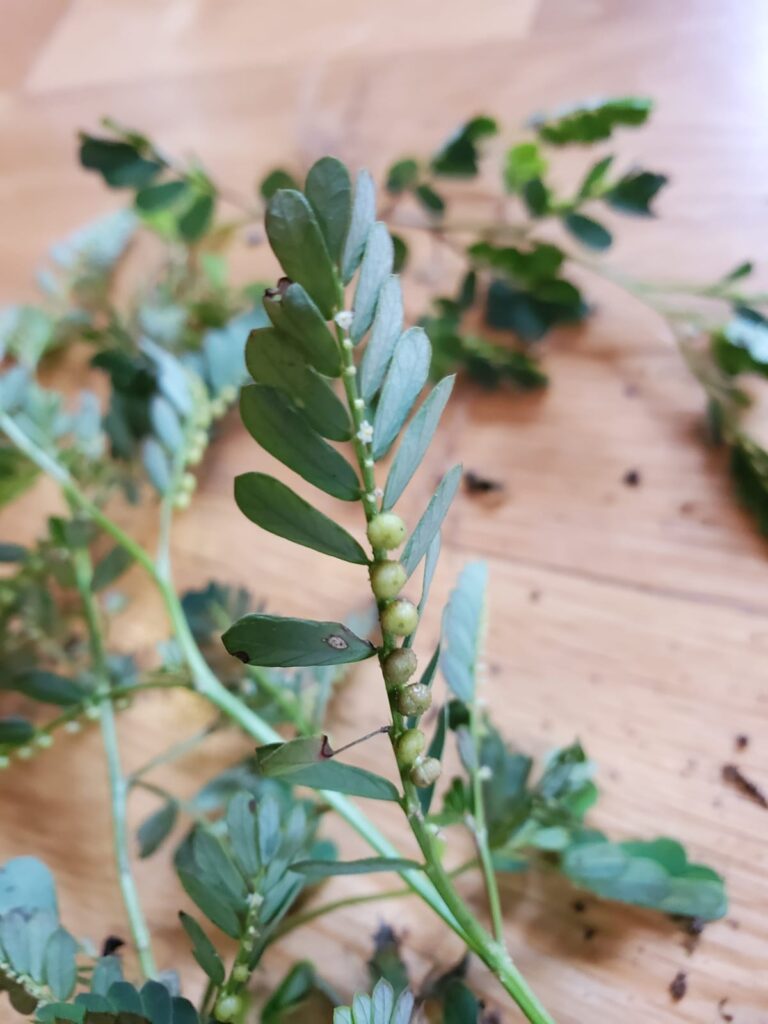
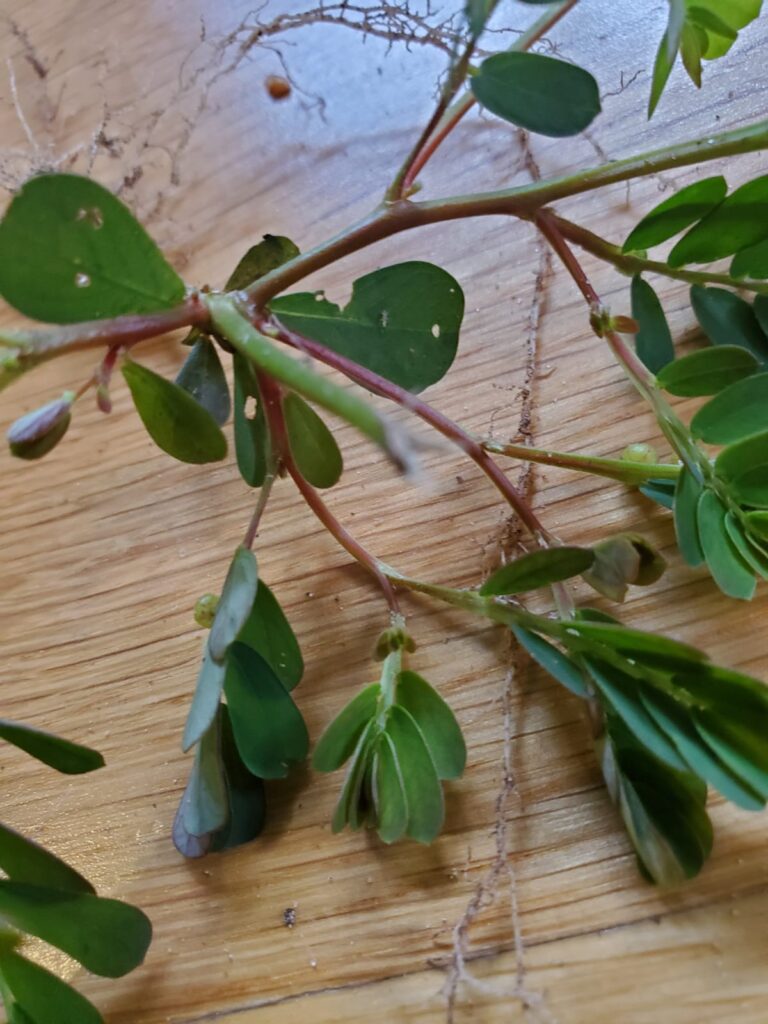
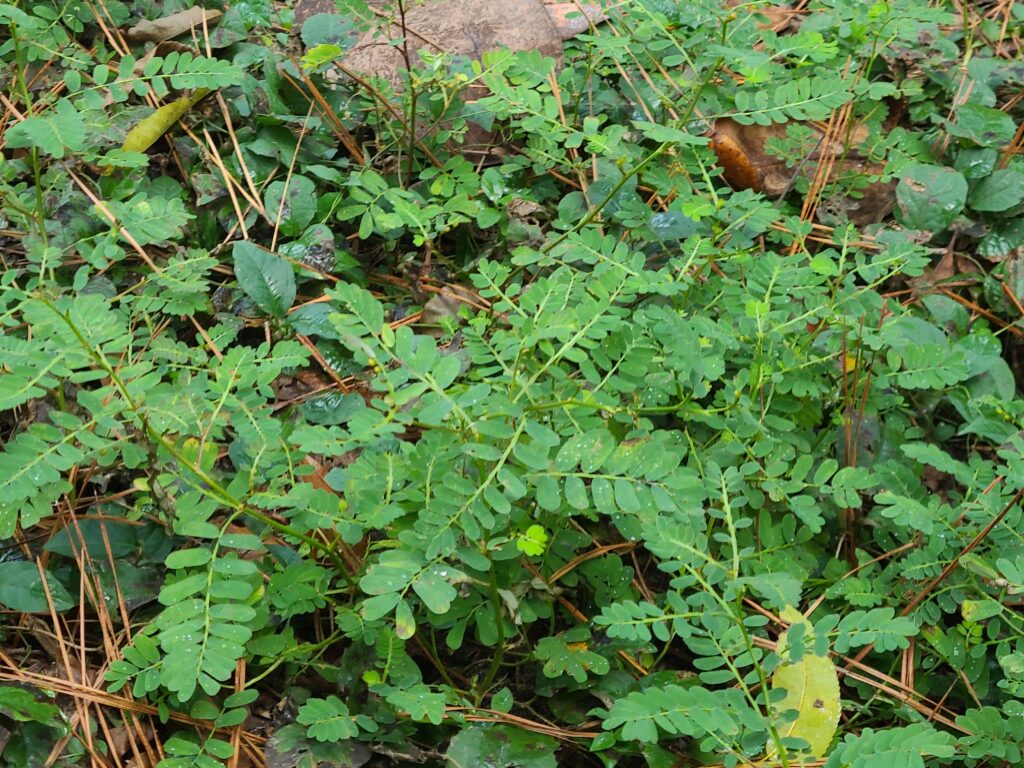
Chamberbitter grows from a vertical stem and puts off many side branches. The leaves are oblong and grow in alternating rows on either side of the branches. It looks similar to the leaves of a mimosa tree which is where it gets one of its folk names, little mimosa. The flowers are quite small and yellowish white. The easiest way to identify chamberbitter is to look under the leaves. It reproduces by dispersing seeds, which are found in the green, yellow, or sometimes red fruit attached to the underside of each branch.4 The plant, depending on the type, can grow up to 2 feet tall.
The most common varieties of chamberbitter each have slightly different appearances. The characteristic below will help you tell them apart:
| VARIETY | LEAVES | STEM | FRUIT | FLOWERS |
|---|---|---|---|---|
| Phyllanthus niruri | Larger, green | Red | Smooth | Yellow |
| Phyllanthus urinaria | Larger, green with possible red edge, slightly overlapping | Red5 | Wart-like | Greenish-white |
| Phyllanthus amarus | Tiny, green, more widely spaced apart | Green | Smooth | Yellowish-white |
| Phyllanthus debilis | Larger, green, more widely spaced | Green | Smooth with larger “petals”6 | Greenish-white |
Growing/Foraging
When in season, which in North Florida is from mid-Summer until the end of Fall, the plants are easy to spot. They grow in fields, lawns, on the edges of disturbed ground and at the edges of wooded areas. They are prolific seeders, so if you find one, it’s likely more are nearby. Only harvest this herb from turfgrass if you know it has not been treated with toxic chemicals.
Sustainability
Chamberbitter is considered introduced and a noxious weed in 46 states. It grows primarily in the Southeastern United States.7 It puts down dense roots with a strong tap root, is drought tolerant, is fast growing and will generate seeds in as little as two weeks. You should have no trouble foraging enough for your use without depleting the amount in the wild.
Medicinal and Food Properties
All parts of these plants are used in traditional and indigenous medicine.
The folk names for this plant, stonebreaker and shatterstone, and the plant’s scientific name P. urinaria point to its use with the urinary tract system, especially its ability to break up kidney stones.8 Constituents in the plant have been shown to inhibit the formation of the calcium oxalate crystals that make up most kidney stones.9 Other genitourinary system benefits noted in the Indian Ayurvedic system of medicine (particularly of P. amarus) are its uses to treat gonorrhea, menorrhagia, and other genital affections. 10
In traditional Chinese medicine (TCM), a decoction of the whole plant is used to treat jaundice, enteritis, diarrhea, and dropsy. In China and Taiwan, traditional practitioners use the plant to treat Hepatitis B. There are also noted cases of the plant being used to treat dysentery, diabetes, and malaria.11
Studies have indicated that Chamberbitter, prepared as a decoction, has anti-cancer properties and is effective against a large variety of cancer cells, validating its traditional use in fighting cancer.12
Chamberbitter has hepatoprotective properties, meaning it helps prevent damage to the liver.13 Traditional practitioners use the plant to treat Hepatitis, a virus that damages the liver.
The plant has also shown it has anti-viral properties, inhibiting herpes and hepatitis B. Besides Hepatitus, studies have also shown extracts of the plant are effective against Herpes,14 the flu, hand foot and mouth disease,15 and a study in 1996 showed the plant helps to control HIV.16
A tincture of the plant is antimicrobial, even showing effects against the antibiotic resistant bacteria, Helicobacter pylori. Chamberbitter tincture has been used to treat Malaria by indigenous people in Africa. Modern medical studies are finding evidence to confirm it’s effectivness.17 The fresh herb as a poultice is commonly used as a topical treatment for ulcers, swelling, sores, and itches. Cold water, steeped with the fresh herb, is used to treat thrush.
The herb protects the cardiovascular system and heart and may help reduce the damage done by diabetes. It’s also effective at reducing blood pressure.18
Chamberbitter contains flavonoids, tannins and phenolic compounds that have antioxidant activity. It has lots of tannins and can be used as a bitter tonic to aid in digestion.
Safety
The latex of some Phyllanthus species can cause allergic reactions to those who are sensitive.
If you are taking pharmaceuticals for high blood pressure, talk to your doctor before taking any herb, like chamberbitter, that also affects blood pressure.
In Diabetes treatment Phyllanthus should be used with caution because the combined effects of both treatments (conventional and medicinal herb) may cause hypoglycemia.
Not recommended during pregnancy.
Studies have shown toxicity of high dosages in lab rats,19 however, with widespread regular use, there have been no reports of toxicity of these herbs at normal dosage levels.20
Preparations
Drying Chamberbitter
The entire plant above the ground can be dried and used to make tea, decoctions, and tinctures. Whatever method you use, wash the plant cuttings beforehand. Remove as much of the water as you can by shaking them dry and then using a towel.
Here are a few methods of drying:
- Hang the whole plant in bundles in a dry place in your home to dry over a week or two
- Cut the plant into pieces and dry on a rack
- Cut the herb and place in a conventional food dehydrator, on low
Chamberbitter Tea
- Boil water then remove from heat
- Steep 1 tbsp of dried herb in the hot water for 10-20 minutes (or a small handful of aerial parts in 1/2 liter water)
- Add honey or sweetener to taste
- Drink up 2-3 cups daily
Chamberbitter Decoction
- Bring 4 cups of filtered water to a boil.
- Add one cup packed dried herb or 2 cups fresh herb (or about 2 complete plants per ½ liter of water)
- Reduce heat to a simmer and cook uncovered until the water is reduced by half.
- Strain plant bits out with a stranger or cheesecloth
- Bottle and keep in the refrigerator for up to a week.
- Drink 1-3 cups a day
Chamberbitter Tincture or Extract
You can make a tincture of chamberbitter in alcohol or vegetable glycerin using any standard method. Here is the folk method:
- Fill a jar ⅔ of the way full with chopped dried herb (200 g of dry plant or 500 g of fresh plant in 1 liter of alcohol at 50 ° for the dry plant and 70 ° for the fresh plant)
- Cover the herb with any 40 proof or higher alcohol such as vodka or use vegetable glycerine for an alcohol-free version.
- Place a cover on the jar
- Place it in a cool dark place
- Shake the jar every day – be sure no plant matter sticks up out of the liquid
- After 30 days, strain the plant matter out of the liquid using cheese cloth
- Filter again using a coffee filter – removing the smallest bits of plant material will make your tincture last longer
- Bottle in glass and keep in a cool, dry and day place.
- Recommended use is 50 drops 3 to 4 times a day in maintenance treatment and
100 drops 3 to 4 times a day in attack treatment during the first 2 weeks.
Sources

